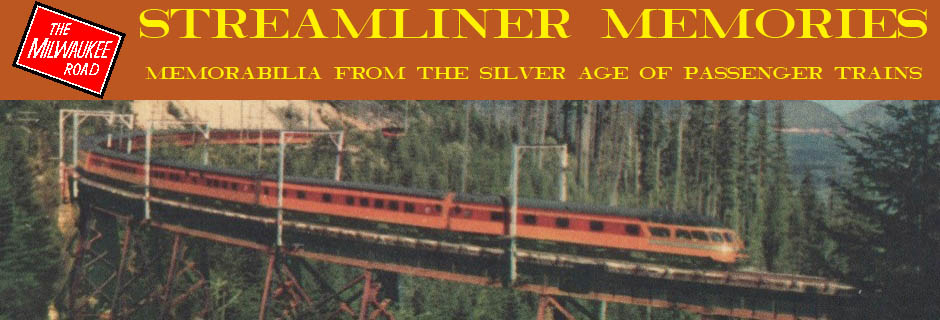The Boston & Maine had a rail line from Boston to Portland. The Maine Central had a line from Portland to Bangor. In 1935, the two railroads began operating a once-a-day streamliner between Boston and Bangor called the Flying Yankee that was nearly identical to the original Zephyr. This train proved too popular for its size and it was soon bumped to a less-populated route befitting its small stature.

This photo of the Flying Yankee was used in a General Electric ad on the inside front cover of the February, 1938 issue of Scientific American. Click to download a 7.5-MB jpg of the entire ad.
In 1947, the two railroads acquired sixteen streamlined coaches, four lounge-diners, and four coach-baggage cars that they used to operate three trains a day between Boston and Bangor. Initially, at least, the three trains were called the Flying Yankee, Pine Tree, and Kennebec. Built by Pullman, the cars had corrugated stainless steel sides reminiscent of the Budd-built Flying Yankee. However, they were purely decorative, being bolted onto the sides of cars made with ordinary steel, because Pullman refused to pay Budd the royalties required to apply its shot-welding invention to weld stainless steel.

Click to download a 3.0-MB PDF of this brochure about the two dozen 1947 cars.
The cars cost a total of $2 million, or about $83,000 per car (almost $700,000 per car in today’s money). The railroads held a contest to name the cars and received entries from 240,000 New England school children–10,000 for each of the cars. The winning names–mostly either Indian words or names of birds–were painted on each car along with the name and home town of the child who submitted that entry.
